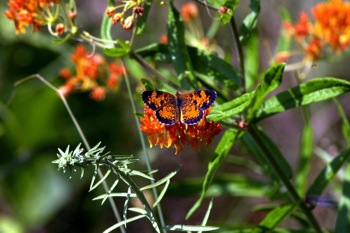 Photo Courtesy Ohio Division of Tourism
Photo Courtesy Ohio Division of Tourism
“The beauty is a subtle beauty,” said Scott Carpenter, director of public relations for Toledo Metroparks, which manages a 4,000-acre section of the Oak Openings region in northwestern Ohio near the Michigan border. “It is not a mountain range or a beach scene, you have to look for it.”
What makes the Oak Openings special is its variety and contrast among arid sand dunes, oak savannahs and thriving wetlands.
“You can be walking through an oak savannah of sparsely spaced oak trees over prairie and come upon sand dunes,” said Carpenter. “You would not expect to find that in a prairie or forest. In between are wetlands. On the top of dunes you will see prickly-pear cactus and wild lupine, and literally a stone’s throw away in swales are wetland species like orchids growing.
“It is quite a different topography and globally rare. There a few places like it left.”
The area developed on sand and clay deposited by glacial Lake Warren, the ancient predecessor of Lake Erie.
“It is at the base of the former lake shore of Lake Erie, which is now 30 miles from there,” said Carpenter.”
In 1999, the Nature Conservancy named the ecosystem, which has more endangered native plant species than any other place in Ohio, one of America’s Last Great Places.
Carpenter said there are about 50 miles of trails in the city park for walking, biking and horseback riding.
“They are all pretty easy,” he sad. “One of the characteristic is it is very flat, as flat as Kansas with the exception of the sand dunes, and they are small. It is flat and flatter.”
Carpenter said Metroparks can provide groups with a naturalist for a nature walk.
Several other agencies protect different parts of the130-square-mile Oak Openings region, including state nature preserves and forests and the Nature Conservancy’s 850-acre Kitty Todd Preserve.
“A recent success story of the Oak Opening is the reintroduction of the Karner butterfly,” said Brown. “It wasn’t seen there since the late 1980s, but is now back.”










